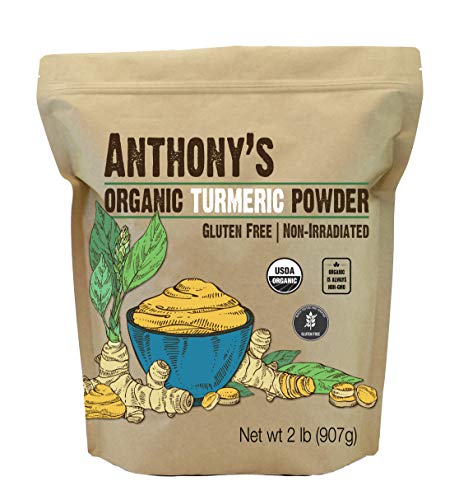Understanding Hiatal Hernia and its Impact on GERD: Anatomy, Causes, Diagnosis, and Treatment
Hiatal Hernia is a medical condition that impacts the diaphragm and may result in GERD (gastroesophageal reflux disease). This article explores the anatomy of a hiatal hernia, its link to the lower esophageal sphincter (LES), and how it leads to stomach acid flowing back into the esophagus. Additionally, we discuss the relationship between hiatal hernia and GERD, providing insights into available treatment options, including medication, lifestyle changes, and surgical interventions.
Anatomy of a Hiatal Hernia
To understand hiatal hernia, let's first look at the main aspects of the anatomy involved.

The esophagus is a tubular organ that forms part of the gastrointestinal upper tract, which connects the throat to the stomach. Its function is to allow the passage of food from the mouth to the stomach while swallowing.
The LES (lower esophageal sphincter) is a muscular ring located at the junction of the esophagus and the stomach. Its primary function is to allow food to enter the stomach and prevent stomach contents, including acid, from flowing back into the esophagus. Normally, the LES relaxes in response to swallowing food, facilitating its passage from the esophagus to the stomach.
The diaphragm, a muscle that separates the chest from the abdominal cavity content, plays a crucial role in breathing by contracting and relaxing. The diaphragm has several small openings that allow organs to pass from the chest to the abdomen.
The esophageal hiatus is an opening in the diaphragm that allows the esophagus to pass from the chest to the abdomen to enter the stomach.
A hiatal hernia is an anatomical problem that occurs when the upper part of the stomach bulges through the diaphragm into the chest cavity.
There are two main types of hiatal hernias: sliding hiatal hernia and paraesophageal hernia. In a sliding hernia, the stomach and the LES slide into and out of the chest through the hiatus. In a paraesophageal hernia, part of the stomach squeezes into the chest alongside the esophagus.
How Does a Hiatal Hernia Cause GERD?
GERD, or gastroesophageal reflux disease, is a chronic condition characterized by the frequent flow of stomach acid into the esophagus. This causes symptoms such as heartburn, regurgitation, chest pain, and difficulty swallowing. Hiatal hernia is considered one of the risk factors for developing GERD.
Associated Mechanisms
- The hernia itself may act as a reservoir for acid, further contributing to acid reflux.
- As the stomach protrudes through the diaphragm, the LES may be displaced, which modifies the pressure needed for its opening and closing, and its relaxation is not triggered by swallowing. When the LES cannot maintain its normal barrier function, acidic stomach contents can easily splash back into the esophagus.
The severity of GERD symptoms associated with hiatal hernia may vary, ranging from occasional discomfort to more persistent and severe issues.
Causes
Multiple factors associated with hiatal hernia are similar to any other hernias in the human body. Besides congenital hiatal hernia, when a person is born with a large hiatus, situations where the abdominal pressure is increased are the most common causes, like chronic coughing, constipation, repetitive vomiting, lifting heavy objects, obesity, or wearing tight clothes or vests.
Diagnosis
Hiatal hernia is a diagnosis made while assessing GERD and other gastrointestinal disorders. Diagnostic tests, such as Barium X-rays and CT scans, play a crucial role in identifying the presence of a hiatal hernia. During a Barium X-ray, a contrast material is ingested, highlighting the structure of the esophagus and stomach on X-ray images. Computed Tomography (CT) scans provide detailed cross-sectional images, aiding in the visualization of the diaphragmatic anatomy and potential herniations.
Endoscopy, another diagnostic tool, helps to confirm the existence of a hiatal hernia, determine its specific type, and assess any associated inflammation. This procedure involves a flexible tube with a camera (endoscope) inserted into the esophagus, allowing for direct visualization of the affected area. Together, these diagnostic methods assist healthcare professionals in accurately diagnosing and understanding the nature of the hiatal hernia and any related complications.
Treatment
Living with a hiatal hernia and its associated condition, gastroesophageal reflux disease (GERD), can be complex. However, treatment options are available to improve the quality of life for individuals affected by these conditions. Typically, treatment strategies involve a combination of medication, lifestyle changes, and, in some cases, surgical intervention.
Medications: PPIs and H2 Blockers
In general, medications are prescribed to alleviate the symptoms associated, not to cure the hernia.
Proton Pump Inhibitors (PPIs), such as omeprazole, esomeprazole, lansoprazole, and pantoprazole, are commonly prescribed to manage acid reflux associated with hiatal hernia and GERD. These medications work by inhibiting the production of stomach acid, thereby reducing the acidity levels in the stomach and minimizing the likelihood of acid reflux into the esophagus. PPIs are often effective in providing relief from symptoms like heartburn and regurgitation.
Histamine-2 (H2) blockers, including ranitidine, famotidine, and cimetidine, are another class of medications used to reduce stomach acid production. By blocking the action of histamine, a substance that stimulates acid secretion, H2 blockers help alleviate symptoms associated with GERD. While not as potent as PPIs, H2 blockers can still effectively manage acid reflux.
Surgical Interventions: Fundoplication and Hernia Repair
Fundoplication is a surgical procedure commonly used to treat GERD associated with hiatal hernia. During the surgery, the upper part of the stomach is wrapped around the lower esophagus, creating a new valve and strengthening the lower esophageal sphincter (LES). This helps prevent the backward flow of stomach acid into the esophagus.
In cases where the hiatal hernia is causing significant symptoms, surgical hiatal hernia repair may be recommended. The procedure involves repositioning the herniated stomach back into the abdominal cavity and repairing the opening in the diaphragm.
Practical Lifestyle Changes for Hiatal Hernia and GERD Management:
Diet Modifications:
Avoiding Trigger Foods: Certain foods can trigger acid reflux symptoms. Individuals with hiatal hernia and GERD are advised to avoid acidic, spicy, and fatty foods. Citrus fruits, tomatoes, chocolate, and caffeinated beverages are examples of potential triggers.
Smaller, Frequent Meals: Consuming small, more frequent meals throughout the day can help reduce the pressure on the stomach and minimize the chances of acid reflux.
Meal Timing: Avoiding meals (any size) shortly before bedtime can prevent stomach contents from flowing back into the esophagus during the night when the symptoms are presented more frequently
Weight Management:
Excess weight can contribute to increased abdominal pressure, which may exacerbate hiatal hernia and GERD symptoms. Adopting a healthy and balanced diet and regular physical activity can aid in weight management and symptom improvement.
Elevating the Head of the Bed:
Raising the head of the bed by about six to eight inches can help prevent stomach acid from flowing back into the esophagus during sleep. This position reduces the effect of gravity on the stomach contents.
Conclusion: Empowering Wellness with Comprehensive Care
Understanding the anatomy of a hiatal hernia and its impact on the lower esophageal sphincter is crucial for comprehending the connection between hiatal hernia and GERD. The displacement or weakening of the LES allows stomach acid to flow back into the esophagus, causing the symptoms associated with acid reflux. Treatment options for hiatal hernia and GERD include medication, lifestyle changes, and surgical intervention.
While medications can provide relief by reducing stomach acid production, lifestyle modifications and surgical procedures aim to address the underlying causes of hiatal hernia and strengthen the LES. Consulting with a healthcare professional is essential for an accurate diagnosis and developing an appropriate treatment plan tailored to individual needs. With the right approach, individuals with hiatal hernia and GERD can manage their symptoms effectively and improve their overall quality of life.
- Antunes, C., Aleem, A., & Curtis, S. A. (2023, July 3). Gastroesophageal Reflux Disease. In StatPearls [Internet]. Treasure Island (FL): StatPearls Publishing. Retrieved January 23, 2024.
- Gastroesophageal reflux disease (GERD) and Hiatal Hernia. Duke Health. (2021, November 18).
- Sfara, A., & Dumitrascu, D. L. (2019). The management of hiatal hernia: an update on diagnosis and treatment. Medicine and pharmacy reports, 92(4), 321–325.
- Smith, R. E., & Shahjehan, R. D. (2023, August 14). Hiatal Hernia. In StatPearls [Internet]. Treasure Island (FL): StatPearls Publishing. Retrieved January 23, 2024.
- Torresan, F., Mandolesi, D., Ioannou, A., Nicoletti, S., Eusebi, L. H., & Bazzoli, F. (2016). A new mechanism of gastroesophageal reflux in hiatal hernia documented by high-resolution impedance manometry: a case report. Annals of gastroenterology, 29(4), 548–550.



















Comments
Join The Conversation...